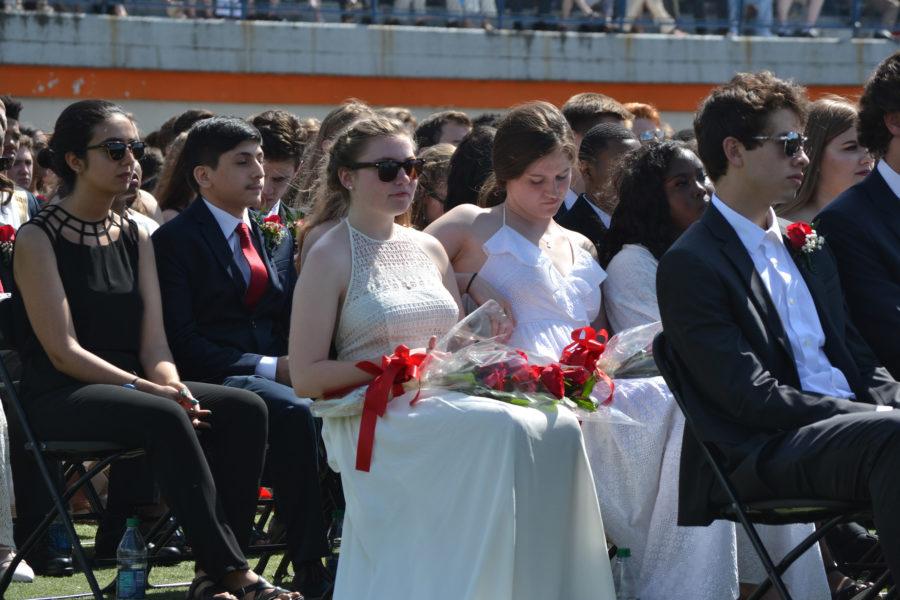OPRF decides on modified graduation attire
February 28, 2017
Every year since the first graduating class in 1877, OPRF has continued the Commencement tradition of suits and white dresses at the graduation ceremony. The only exception was 1918, when girls wore white sailor dresses to be patriotic in the heat of World War I. In the same year, nearly 100 years ago, the U.S. Postal Service introduced airmail and the Sedition Act was passed.
Despite the longstanding tradition of long white dresses, red roses and dark suits, recent years have seen a push for a more accepting attire requirements or the standard cap and gown dress code. This year, like last year’s graduating class, the senior class voted for a modified attire option, in which students are required to wear a formal, black and/or white outfit of their choice, as opposed to girls wearing only white dresses and boys wearing only suits. The other option on the ballot was a cap and gown outfit.
“Even though now women are not forced to wear white dresses, I think it is time for a change,” said senior Cecilia Heineke, a proponent of a cap and gown dress code. She and other supporters ground their reasoning in both visual and economic equality. “I think it’s a really interesting concept for everyone to wear the same gown, so everyone in our class looks equal,” Heineke said. “Moreover, I think it’s important to remember that not all students at OPRF can afford to buy or rent formal attire.”
Supporters of the modified option cite tradition and variety in their reasoning. Senior Charlotte Melcher said, “I support the modified option because I believe that it upholds our school tradition but also remains inclusive, which was the original goal of changing our graduation attire.”
Students such as Melcher argue that, in a school as diverse as OPRF, caps and gowns would not represent the student body accurately. “I don’t believe that caps and gowns represent OPRF,” said Melcher. “Our high school is built on diversity and our traditions represent this idea every day. Caps and gowns accepts something that does not represent those things that are best about our school- the variety of our student body.”
There are, of course, countless arguments and counterarguments on the subject. Some point out that one would still likely purchase a formal outfit to wear under their gown, and others bring up that a traditionally gender-based system, regardless of modifications, singles kids out. Despite opposing viewpoints of the correct graduation dress code, both sides agree feeling comfortable during the ceremony is the most important part: proponents of caps and gowns advocate fairness and acceptance, and proponents of the modified option advocate expression and tradition. “I want our class to embrace each other as equals, and for everyone to feel confident receiving their diploma,” said Heineke.
“I want to express our school’s individuality while still allowing students to feel comfortable with what they’re wearing,” said Melcher.
